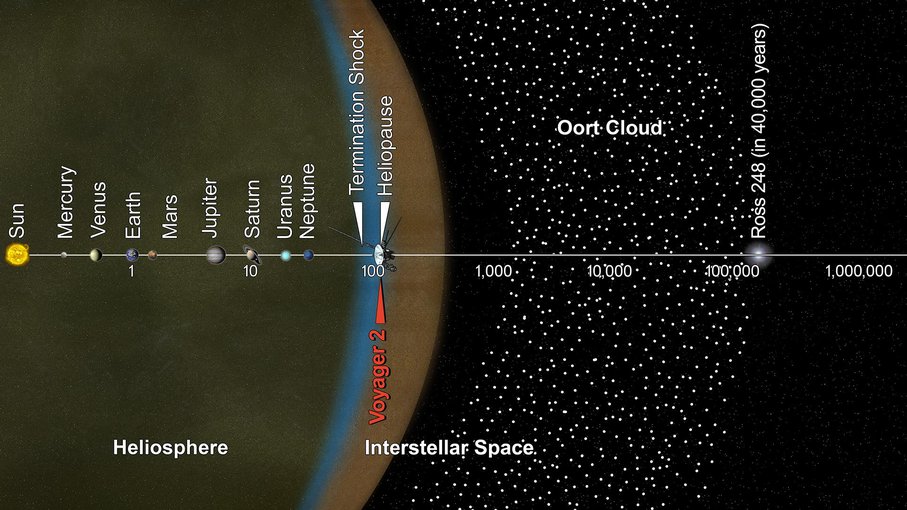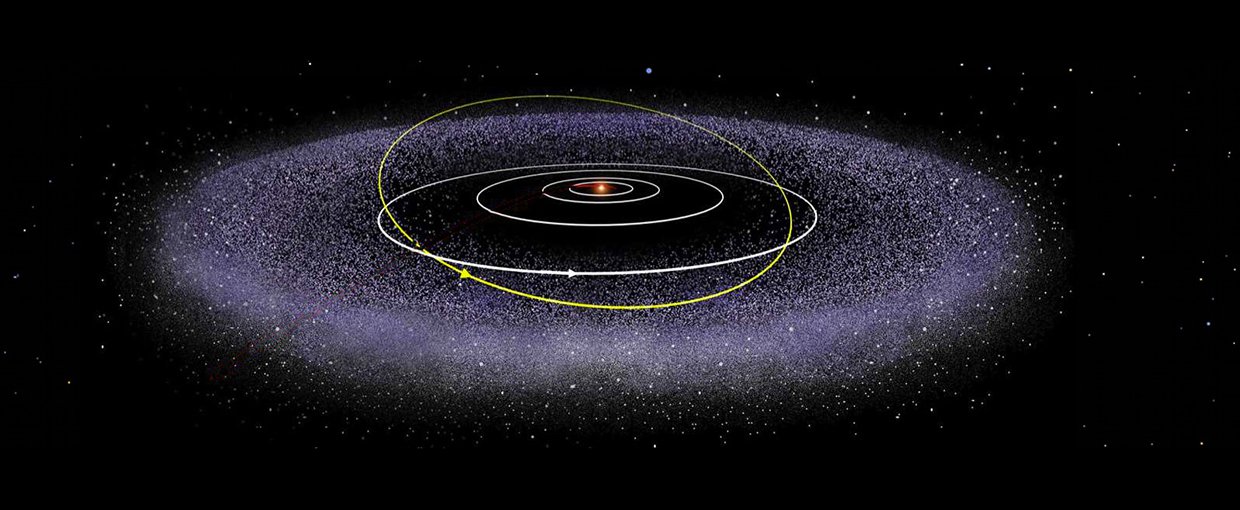
Researchers supported in part by the NASA Astrobiology Program have used ground-based observations to revise data on the molecular species in five Oort Cloud comets. The comets were observed between 1999 and 2012 using the the near-infrared echelle grating spectrometer (NIRSPEC) at the W. M. Keck Observatory on Mauna Kea, Hawai’i, USA. The revised data highlights improvements in data sets that can now be obtained using new models and methods that have been developed since 2011.

This artist's concept puts solar system distances -- and the travels of NASA's Voyager 2 spacecraft -- in perspective. The inner edge of the main part of the Oort Cloud could be as close as 1,000 AU from our Sun. The outer edge is estimated to be around 100,000 AU. It will take about 300 years for Voyager 2 to reach the inner edge of the Oort Cloud and possibly about 30,000 years to fly beyond it.Image credit: NASA.
The study, “New Insights into the Chemical Composition of Five Oort Cloud Comets after Re-analysis of Their Infrared Spectra,” was published in The Astronomical Journal. This work was supported by the Emerging Worlds Program and the NASA Astrobiology Institute (NAI) element of the NASA Astrobiology Program. The NASA Astrobiology Program provides resources for Emerging Worlds and other Research and Analysis programs within the NASA Science Mission Directorate (SMD) that solicit proposals relevant to astrobiology research. This research is a critical part of NASA’s work to understand the Universe, advance human exploration, and inspire the next generation. As NASA’s Artemis program moves forward with human exploration of the Moon, the search for life on other worlds remains a top priority for the agency.
